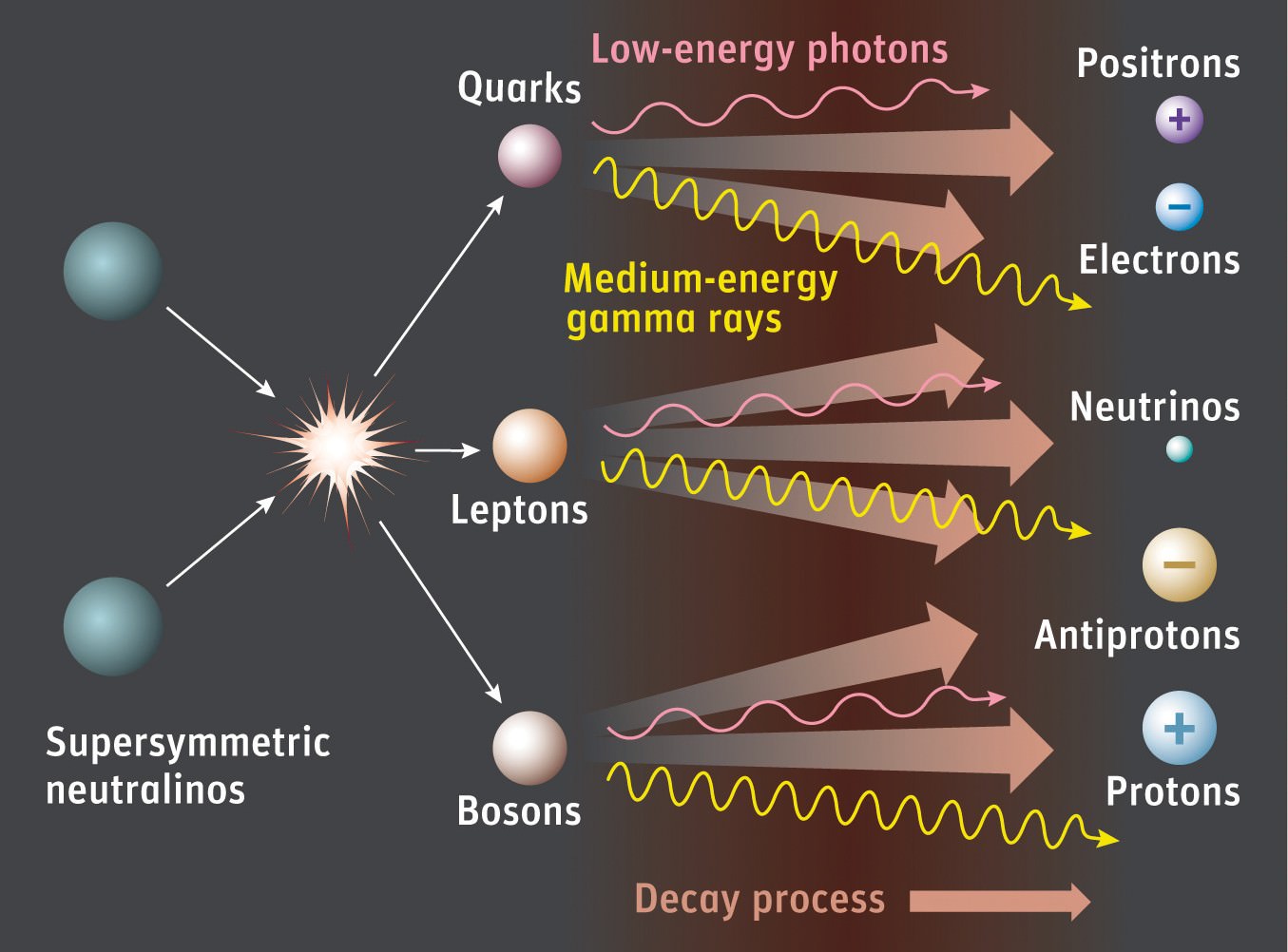Dark Matter In Space Presentation
| Introduction to Dark Matter | ||
|---|---|---|
| Dark matter is a mysterious substance that makes up approximately 27% of the universe. It does not emit, absorb, or reflect light, making it invisible and difficult to detect. Scientists believe dark matter plays a crucial role in the structure and evolution of galaxies. | ||
| 1 | ||
| Evidence for Dark Matter | ||
|---|---|---|
| Observations of galaxy rotation curves indicate the presence of more mass than can be accounted for by visible matter. Gravitational lensing, where light is bent by the gravitational pull of unseen matter, provides further evidence for dark matter. The cosmic microwave background radiation also supports the existence of dark matter, influencing the large-scale structure of the universe. | ||
| 2 | ||
| Types of Dark Matter | ||
|---|---|---|
| Weakly Interacting Massive Particles (WIMPs) are a leading candidate for dark matter, theorized to interact weakly with normal matter. Axions, hypothetical particles with low mass, are another potential form of dark matter. Massive Compact Halo Objects (MACHOs), such as black holes or brown dwarfs, have also been proposed as dark matter candidates. | ||
| 3 | ||
| Dark Matter Distribution | ||
|---|---|---|
| Dark matter is thought to be distributed in halos surrounding galaxies, extending beyond their visible boundaries. Computer simulations suggest dark matter forms a web-like structure, connecting galaxies and galaxy clusters. Clumps of dark matter, known as subhalos, may contain smaller galaxies or groups of stars. | ||
| 4 | ||
| Dark Matter Searches | ||
|---|---|---|
| Experiments like the Large Hadron Collider (LHC) attempt to produce dark matter particles by colliding particles at high energies. Direct detection experiments aim to observe dark matter particles interacting with normal matter, using sensitive detectors deep underground. Indirect detection methods look for signals produced by dark matter annihilation or decay, such as gamma rays or cosmic rays. | ||
| 5 | ||
| Implications and Future Research | ||
|---|---|---|
| Understanding dark matter is crucial for unraveling the mysteries of the universe's formation and evolution. Studying dark matter may provide insights into particle physics and the fundamental nature of matter. Ongoing research continues to refine our understanding of dark matter, with new experiments and observations planned for the future. | ||
| 6 | ||
| References (download PPTX file for details) | ||
|---|---|---|
| Bergstrom, L. (2000). Nonbaryonic dark matter... Bertone, G., Hooper, D., & Silk, J. (2005). P... Tulin, S., & Yu, H.-B. (2018). Dark Matter Se... |  | |
| 7 | ||





